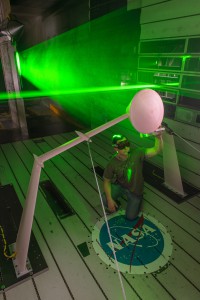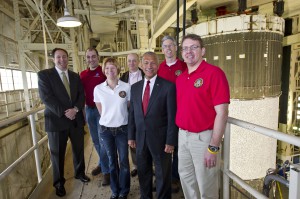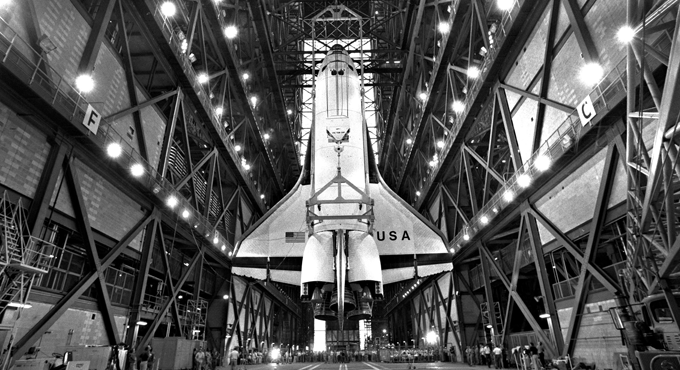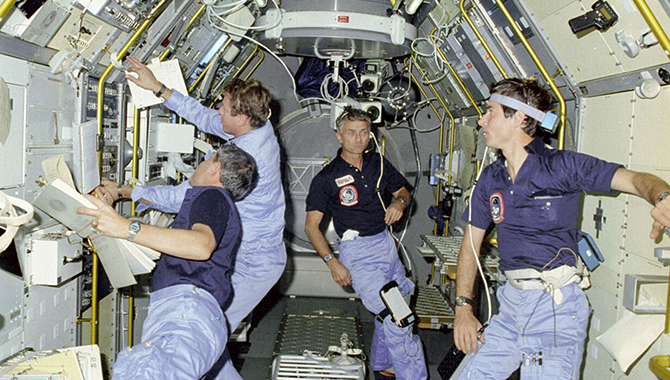
By Dawn Schaible and Tim Wilson
Memories fade, and with them so does the impact of lessons learned. Ten years after the Columbia tragedy we need to remind ourselves of these lessons and continue to be vigilant as NASA develops its current and future missions.
Shortly after the Columbia accident, the NASA Engineering and Safety Center (NESC) was created to address the agency’s lack of a strong program-independent resource to provide programs with an alternate perspective on difficult technical issues. In the announcement establishing the NESC, former NASA Administrator Sean O’Keefe stated: “The new NESC will have the capacity and authority to have direct operational influence on any agency mission. When it comes to safety and engineering analysis, we need to improve our ability to share technical information, practices and talent, and independently ensure we are in the best position to achieve mission success.”
Ten years later, the NESC continues to fulfill its charter by bringing together technical experts from NASA, industry, other government agencies, and academia, leveraging their expertise to solve problems. The NESC has accepted more than 500 technical requests since its inception, providing quantifiable, value-added solutions to the high-risk technical issues facing every major NASA program and project.
The NESC model is based on a “tiger team” approach, in which multidisciplinary teams of independent experts are assembled to solve complex engineering problems. A small core organization coordinates a wide support network, maximizing technical reach while minimizing operational overhead. Although the NESC leadership, system engineering, and technical support functions are based at NASA’s Langley Research Center (LaRC), other NESC core team members reside at their home centers to maintain contacts and stay engaged in day-to-day technical work. Virtual tools are widely employed to facilitate organization-wide discussions, meetings, and reviews.

The NESC sponsored this measurement of the wake deficit behind an 8%-scale model of an Orion crew module in the 11-Foot Transonic Wind Tunnel at Ames Research Center using laser-based particle image velocimetry. T.J Heineck is shown checking alignment of the laser used to measure particle flow in the tunnel.
Photo Credit: NASA
The NESC’s flexibility is enhanced by Technical Discipline Teams (TDTs): networked teams of technical experts organized and led by discipline-specific NASA Technical Fellows. NESC administers the Technical Fellow Program for the agency and maintains 18 active TDTs, 15 organized around specific engineering disciplines and three cross-cutting teams dedicated to systems engineering and robotic and human spaceflight operations. TDT members are leading experts in their respective fields, drawn from across NASA and other government organizations, industry, and academia. This broad-based, matrixed network of technical experts, currently some 700 strong, is the main source of talent for the NESC’s multidiscipline problem-solving teams. The NESC builds critical partnerships by developing strong relationships and trust through routine technical interactions and periodic face-to-face meetings. The importance of this cannot be overstated. Relationships must be established and an atmosphere of trust created long before individuals are called upon to participate in a technical assessment. The collegial atmosphere of regular TDT face-to-face meetings helps break down barriers between organizations and establish channels for communication, which is every bit as important as the technical work a TDT facilitates.
Anyone can request NESC assistance. The NESC has responded to requests from all levels of the agency, including the NASA Administrator, Mission Directorate Associate Administrators, chief engineers, program and project managers, and discipline engineers. Since the NESC’s operations and funding are independent of NASA programs, the organization can be a powerful advocate for a lone engineer with an alternate technical opinion and, in fact, it has filled that role on more than one occasion. A junior engineer may have a technical concern but not the data or experience needed to defend their case to senior engineers. The NESC can bring in experts or conduct independent testing to obtain the data needed to more fully understand the concern and then present the information to the appropriate decision makers. All requests are evaluated against a comprehensive set of criteria designed to ensure the NESC engages with those issues most critical to NASA. NESC products are the technical reviews, test and evaluation results, and recommendations produced in the course of the work and provided to program managers or other stakeholders. These are fully documented and vetted through the NESC Review Board (NRB), a body composed of NESC leadership and core team members including the NASA Technical Fellows. Products are subjected to a two-step review process that provides an efficient means of reviewing technical work, vetting findings and recommendations across the entire organization, and assuring the high quality of products released to stakeholders. Lessons learned, best practices, and insights from the NASA Technical Fellows are also captured as short videos which can be accessed through the NESC Academy website.
NESC technical assessment team size and composition are tailored to the project at hand. Team members are selected not only for their technical skills, but also to provide a diverse mix of organizational and technical backgrounds. One of the principal lessons gleaned from 10 years of operation is the value technical diversity brings to a problem-solving team. Individuals come to a project with their own lessons learned, backgrounds, and experiences, and the entire team benefits from the varied points of view they represent. Work is conducted in a “badgeless” environment, with interfaces tailored to the system or project at hand, not to centers or organizations. Time and again, experience has taught that technical expertise, background, and open communication are the important parameters, not home organization, location, or employer.

Shell Buckling Knockdown Factor (SBKF) test day visitors (from left), Robert Lightfoot, NASA Associate Administrator; George Olden, MSFC; early career participant Courtney Flugstad, SBKF deputy; Clint Cragg, NESC Principal Engineer; Charles Bolden, NASA Administrator; Michael Roberts, MSFC; and Dr. Mark Hilburger, SBKF assessment lead.
Photo Credit: NASA
Recently, the NESC has begun supplementing its larger assessment teams with one or two junior engineers, typically with 5 to 10 years of experience, through an innovative “Early Career Participant” initiative. This gives junior engineers an opportunity to work alongside the leading experts in their technical disciplines, in much the same way medical residents work with experienced doctors. The team gets the benefit of fresh ideas and new points of view, while the young engineers receive valuable experience to carry back to their home organizations. The agency’s return on investment comes with the informal knowledge capture that takes place through inter-generational mentoring.
The NESC cross-agency problem-solving approach has become a model for collaboration within NASA, and its test and analytical products have impacted nearly all NASA human and robotic spaceflight programs. The organization has proven adept at evolving and adapting to maintain alignment with agency priorities, and as the Space Shuttle Program has come to a close the NESC has become increasingly involved in the development of next-generation vehicles, including those of NASA’s commercial partners. The NESC model, infrastructure, and technical resources have found application beyond the agency as well, where they have been applied to problems as diverse as Toyota’s unintended acceleration issue, the USAF F-22 hypoxia investigation, and even the Chilean miner rescue. The flexibility inherent in the NESC model, the ability to rapidly assemble and deploy high-performing technical teams, and the agility afforded by tailored processes, make the NESC an ideal venue for bringing NASA’s technical resources to bear on such problems.
Columbia Accident Investigation Board chairman Admiral Harold Gehman commented at the time of the accident that, “The safety organization sits right beside the (Shuttle) person making the decision, but behind the safety organization there is nothing there, no people, money, engineering, expertise, analysis … there is no ‘there’ there.” One of Columbia’s enduring legacies may be the “there” NESC has been able to provide, not only to Safety and Mission Assurance, but to all of NASA. And while the technical solutions the NESC has provided have been of direct benefit to the agency’s programs, the lessons learned and continuously refined over 10 years of operation should prove equally valuable to other organizations facing difficult technical challenges.
If you have a technical concern for the NESC to address, or if you are interested in supporting an NESC team, please contact the NESC Chief Engineer at your center or visit nesc.nasa.gov.
A technician instruments the NESC-developed composite crew module for testing.
Download: Fullsize
Featured Photo Credit: ATK-Steve Jones









